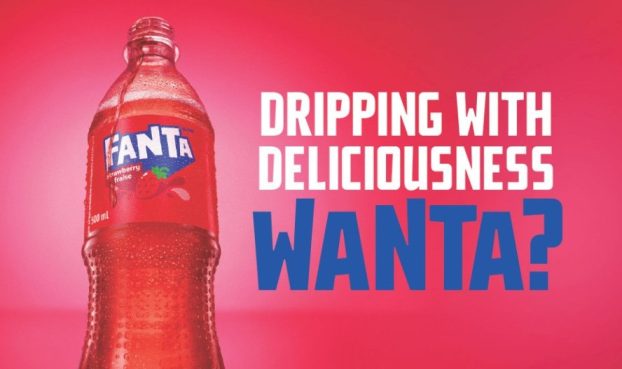A man slices through vegetables with incredible ease, thanks to his stainless steel Ginsu knives while a voice-over exclaims: ‘They never need sharpening!’
This is the infomercial as we all know it: a long-form TV spot that peddles some novelty item in the wee hours of the morning and is generally regarded as the advertising industry’s lowest common denominator.
In recent years, however, more corporate brands, which in the past have put their marketing might behind traditional advertising, have blended Direct Response Television (DRTV) into their ad recipe.
According to a recent report from Nielsen Media Research, the greatest boost in U.S. advertising volume during 2001 came from the direct response sector, which was up 18%, a trend the firm believes was ignited by an increase in infomercials.
The New York-based Direct Marketing Association estimates that in 2000, sales driven by direct-response television, including long-form, short-form, and home shopping, reached $117.6 billion, up from $68.5 billion five years earlier, and is projected to surge to $178.9 billion by 2005.
Closer to home, Nicola Petrie, account executive at Toronto Star Television says the network has witnessed a ‘huge movement of conventional advertisers using the medium,’ such as Tribute TV, Dynamic Mutual Funds and Bell Sympatico. She estimates that in the last year, there was a 55% increase in the number of Fortune 500 companies coming onboard with DRTV.
‘We were scrambling in 1997 to get advertising and now there’s a high demand, especially for prime-time weekends. [Products and services] are becoming more difficult to explain,’ she says, ‘particularly in financial and technology offerings. The only way to get customers is to educate them. This format allows marketers to do that.’
In fact, the TV station, which produces 30-minute DRTV commercials for a price tag ranging from $1,500 to $3,000 per finished minute, has renamed infomercials ‘edumercials.’ According to Petrie, the benefit to conventional advertisers is that infomercials offer enough time to present features of a product or service that are complex or difficult to explain. ‘They can provide demonstrations, testimonials, and then the ads are measurable.’
Scotiabank, for example, launched a 60-second commercial with a DRTV component in spring, produced by its Toronto-based AOR Bensimon*Byrne D’Arcy, which outlined the rewards of an RSP savings account.
The ad portrayed the exchange of a husband and wife as they pored over their monthly budget, and explained how to make automatic contributions to an RSP, while offering a 1-800 number throughout.
‘We’ll be testing a lot more of those,’ says Rick White, VP of brand and marketing management at Scotiabank. ‘Now that we have more functionality online, people can go to the Web and make investments. To be able to refer them to the site, as well as to call centres, makes DRTV more viable in the marketing mix.’
The ad followed a similar half-hour ad promoting mortgages on Toronto Star TV (the station also produced the spot) that ran last fall.
‘It was directed at first-time homebuyers who tend to be hungry for information, but are concerned about approval and going to the bank,’ explains White. ‘This enabled them to get a better understanding about what’s available.’
White says the bank received about 5,000 calls from the mortgage spot, which he deems a good result considering the size of the audience. (According to Petrie, the station draws 818,000 viewers on a weekly basis.) ‘We would absolutely use the format again, for the right product,’ he says.
Amex Canada is also a believer in DRTV. In April, it repackaged a 60-second commercial – in conjunction with a scaled-down 30-second brand spot – for its Amex Air Miles card, which has been on air for five years. Jennifer Howard, senior marketing manager of advertising, won’t give results but points out that, ‘In five years, we haven’t looked back.’
Also this past spring, the firm launched a French version for the Quebec market. ‘Real People’ focuses on consumers using the credit card in different scenarios, such as while shopping for groceries or pumping gasoline. ‘Because it is so benefit-focused, 30 seconds wasn’t enough time to talk about the product,’ explains Howard.
The DRTV movement has spanned outside of the financial industry, too. Bell Sympatico debuted its second infomercial last October. The 30-minute ad runs on Toronto Star TV, but also CFMT, WUTV and Citytv.
‘[Our] technology is new to some people and some are uncomfortable with it,’ explains spokesperson Karen Ming-Sun. ‘This allows us to sit down and go through its features. You can’t talk about the product for that long elsewhere.’
Similarly, Maynard, Mass.-based Monster.com invested in a 30-minute commercial dubbed the ‘Monster Show’ last year, to overcome the complexity of its online job search service. MC-ed by Monster founder Jeff Taylor, it starred consumers who had found employment via the site. Taylor interviewed these subjects, while educational elements demonstrated how to use the site.
‘It wasn’t so much a direct response pull, as that we wanted to take the opportunity to introduce our product and our brand in a much more indepth way than we could with a 30-second TV commercial,’ says Peter Blacklow, SVP of marketing.
‘With 30 seconds, we could get the basic message across, but we wanted to take 30 minutes to show how you can use the product – from building resumes, to searching jobs and creating agents to search jobs for you.’
According to Guy Stephenson, managing director at Toronto-based direct marketing agency OgilvyOne, in the last five years, the number of his clients interested in DRTV has doubled, and a new term, ‘brand response television’ or BRTV, has emerged at the agency as a result.
‘[It means] combining a branding message with a DRTV technique,’ he says. ‘The ad builds brand attributes and generates an immediate response through both a 1-800 number and the Web. Its ability to do both is what is exciting clients.’
Blue-chip brands like American Express and IBM have come on board at the agency, as well as the Ontario Heart and Stroke Lottery. For IBM, OgilvyOne produced nine 60-second spots last year in an attempt to make Big Blue more ‘friendly and approachable to small businessmen.’
Stephenson won’t comment on results, but says the infomercials were successful and currently IBM in the U.S. is adopting a similar strategy.
An advantage to the BRTV format, he adds, is its innate ability to monitor feedback, a boon to advertisers who are obsessed with measurability. ‘We assign a unique telephone number so that we know exactly which stations perform and which ones don’t, whereas normally you wait until the end of a buy and evaluate it based on the orders received.’
Another plus is that the media buy is much cheaper; an infomercial can run at $200 spot, as opposed to the usual $1,000, for instance, because there is the flexibility to slot it into times wherever there is unsold inventory.
‘You can run off prime time, which is when people are less engaged in programming,’ he says. ‘People are more likely to interrupt a repeat than one of their favourite prime-time shows, where they don’t want to break away and get on the phone.’
Bryan Tenenhouse, SVP and CD at Toronto-based Vickers & Benson Direct & Interactive, agrees there is an augmented interest in the infomercial format, but says it should be restricted to certain categories.
‘The product [in question] should appeal to a broad section of the viewing public,’ he says. ‘For instance, it makes sense for financial institutions because their products have mass appeal – they want to draw their old customers, and as many new customers as they can.’
Certainly, the infomercial has worked wonders for the usual gimmicky companies. Greenwood Village, Colo.-based Orange Glo International, manufacturer of cleansing products OxiClean, Orange Clean and Original Lustre, first used direct TV in 1996 on the U.S. Home Shopping Network; since then, sales have jumped from US$1.2 million to US$245 million last year.
Similarly, Thane Direct, which has a Canadian subsidiary based in Toronto and produces infomercials for its own merchandise, sprouted from a US$6-million to a US$200-million firm in a dozen years, according to Patty Booth, VP and GM of the Canadian unit, who says it costs somewhere between US$150,000 to US$400,000 to produce a 30-minute DRTV spot.
Thane sells the standard ‘Can you believe it?’ fare, such as the Thunderstick Pro, featuring eight appliances in one, and the Ab-Tronic Pro, a toning device you can use while ‘doing the dishes, mowing the lawn,’ etc., in order to develop six-pack abs. Reno-Depot’s infomercial spoof
Imagine being able to spin vinyl while your burgers cook on the grill. A new ad from Montreal-based home improvement chain Reno-Depot showcases a barbeque with affixed turntables for impromptu DJs. The catch is that the product doesn’t really exist.
Reno-Depot’s new summer campaign for Quebec features a trio of ads, produced by Diesel Marketing in Montreal, that highlight merchandise just as an infomercial would. But in these ads, as the voice-over outlines the various attributes, they become increasingly bizarre, such as a power drill that has a cake decorating function, and a shower head with attached microphone for belting out tunes while you lather.
‘You don’t expect that kind of advertising from a retailer and the creative strategy was to get consumers’ attention with an infomercial that looks real, but gets weird in the end,’ explains Philippe Meunier, VP (creative) at Diesel. ‘The creative builds attention in the first three seconds and then there’s a tipping point, where consumers realize ‘this is unbelievable.” The tagline? ‘If it existed, Reno-Depot would have it.’























